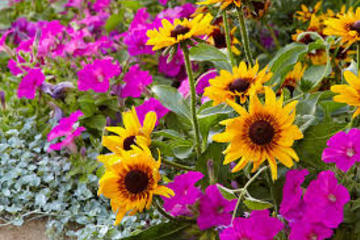We found 6 results that contain "forest"
Posted on: #iteachmsu


WHY IT’S IMPORTANT THAT WE VALUE NATURE
The natural world is an incredible wonder that inspires us all. It underpins our economy, our society, indeed our very existence. Our forests, rivers, oceans and soils provide us with the food we eat, the air we breathe, the water we irrigate our crops with. We also rely on them for numerous other goods and services we depend on for our health, happiness and prosperity.
These natural assets are often called the world's 'natural capital'. These benefits are also hugely important to the economy – from farming and forestry to leisure and tourism. If you add them all up, the total value of these benefits is phenomenal – at least US$125 trillion every year.
These natural assets are often called the world's 'natural capital'. These benefits are also hugely important to the economy – from farming and forestry to leisure and tourism. If you add them all up, the total value of these benefits is phenomenal – at least US$125 trillion every year.
ASSESSING LEARNING
Posted on: #iteachmsu


Status and trends in forest area
Forest ecosystems are a critical component of the world’s biodiversity as many forests are more biodiverse than other ecosystems.
Forests cover 31 percent of the global land area. Approximately half the forest area is relatively intact, and more than one-third is primary forest (i.e. naturally regenerated forests of native species, where there are no visible indications of human activities and the ecological processes are not significantly disturbed).
The total forest area is 4.06 billion hectares, or approximately 5 000m2 (or 50 x 100m) per person, but forests are not equally distributed around the globe.
More than half of the world’s forests are found in only five countries (the Russian Federation, Brazil, Canada, the United States of America and China) and two-thirds (66 percent) of forests are found in ten countries.
Forests cover 31 percent of the global land area. Approximately half the forest area is relatively intact, and more than one-third is primary forest (i.e. naturally regenerated forests of native species, where there are no visible indications of human activities and the ecological processes are not significantly disturbed).
The total forest area is 4.06 billion hectares, or approximately 5 000m2 (or 50 x 100m) per person, but forests are not equally distributed around the globe.
More than half of the world’s forests are found in only five countries (the Russian Federation, Brazil, Canada, the United States of America and China) and two-thirds (66 percent) of forests are found in ten countries.
Authored by: Divya Sawant
Disciplinary Content
Host: MSU Libraries

Artist Workshop: Using 360 Cameras to Show Changes to Place
Join the DSL Graduate Arts Fellow, Hailey Becker (Art, Art History and Design and Forestry) in a workshop on using 360 cameras to capture changes to place. Participants will be guided through the basics of recording and editing 360 footage, ending with their footage being displayed in the Digital Scholarship Lab 360 Room. Using 360 footage can be a great way to archive an artistic practice or scientific research. No experience required, all levels welcome!
Navigating Context
EXPIRED
Host: MSU Libraries

Artist Talk: “Where the Light Gets In” - Engaging the Community About Tree Removals on Campus
Artist and researcher Hailey Becker (Art, Art History and Design and Forestry) will give a brief talk about her series of art installations marking the removal of trees on campus with beams of light and recount her journey to display and document the work in the Digital Scholarship Lab (DSL), including a short 360 video and an interactive campus tour of the installations. After the talk and opportunity to view the work in the DSL, the artist will take attendees on the interactive campus tour to see how areas of campus have changed over time and how these changes affect our sense of place and relationship to the environment. Light refreshments will be provided.
Navigating Context
EXPIRED

